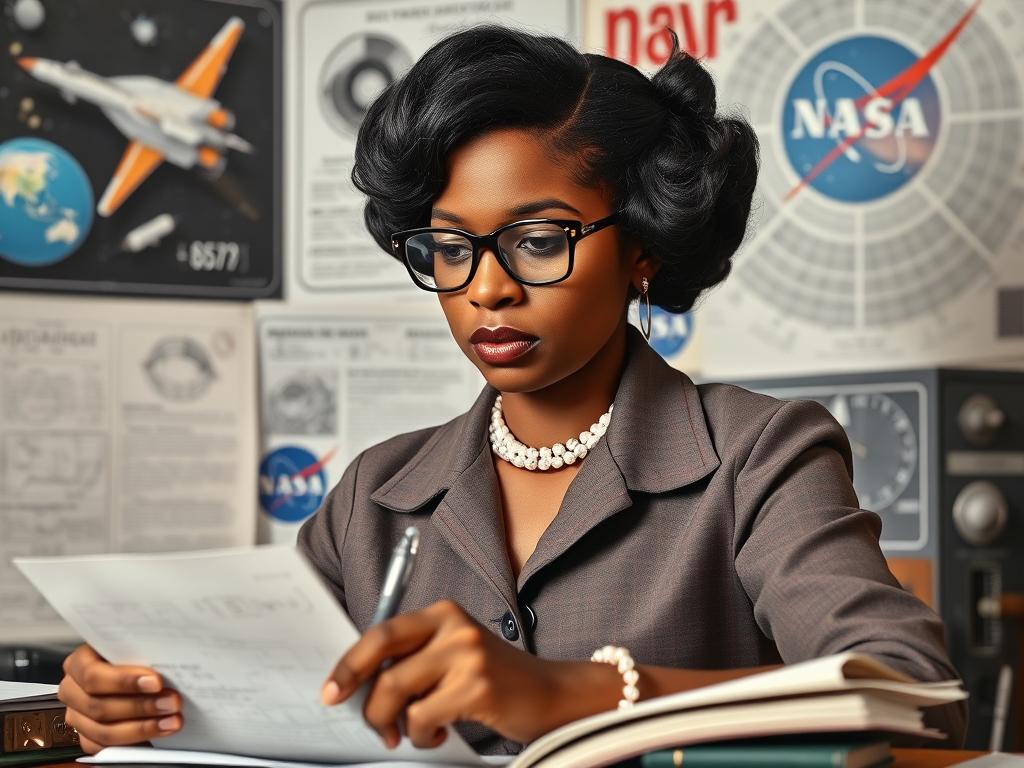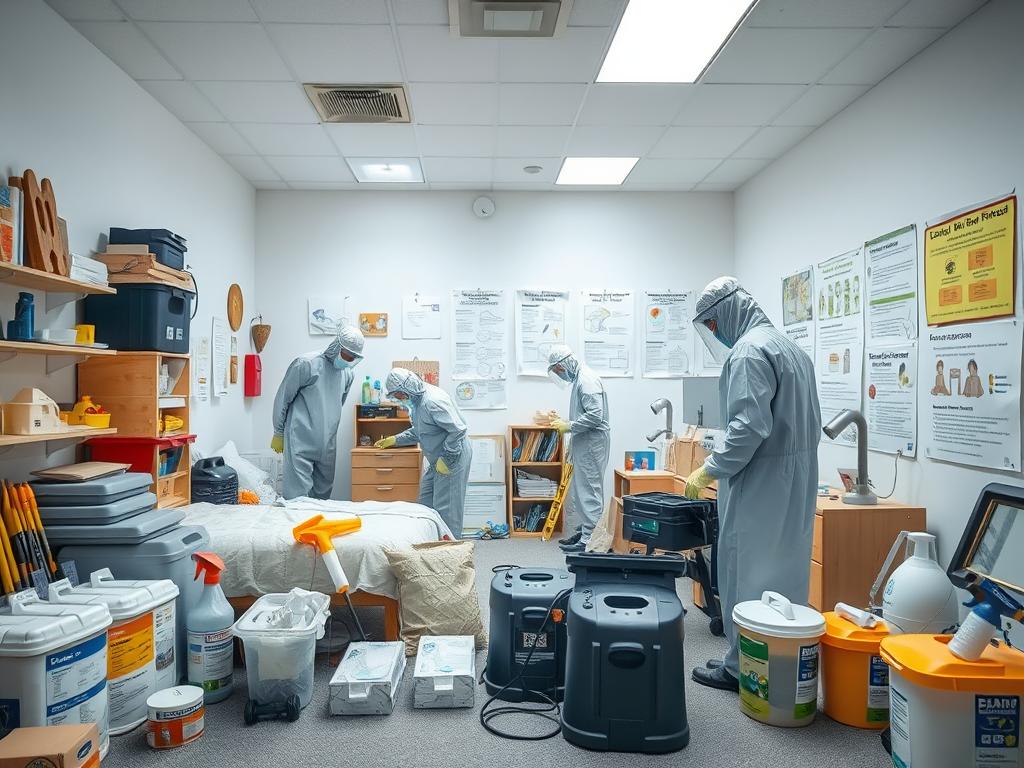As a kid, I looked up at the stars and dreamed of space. I didn’t know Katherine Johnson was making those dreams real. Her story made me realize that heroes are often hidden.
Katherine Johnson’s life is truly inspiring. She grew up in West Virginia and became a key part of NASA’s space race. Born in 1918, she faced racism and sexism but didn’t let it stop her.
Her math was crucial for NASA’s success. Her work kept astronauts safe and missions on track. She helped put Americans in space and on the Moon.
Johnson worked in a time of segregation but her talent shone. She became a respected figure at NASA, showing that talent knows no color or gender.
Her legacy goes beyond her math. She opened doors for women and minorities in STEM. Her story inspires us all to reach for the stars.
The Life and Early Education of Katherine Johnson
Katherine Johnson was born in White Sulphur Springs, West Virginia, on August 26, 1918. Her early years were filled with promise. They set the stage for a life that would change mathematics education and fight racial segregation in the United States.
Childhood and Family Background
Johnson was born into a world with few chances. But she had a gift for numbers from a young age. By ten, she was in high school, showing her love for learning.
Her father saw her talent and moved the family. He wanted Katherine to get an education beyond their hometown’s limits.
Academic Achievements
Johnson’s school years were filled with amazing achievements. She graduated high school at 14 and finished college by 18. At West Virginia State College, she got degrees in mathematics and French.
These degrees were the start of her work in space exploration.
Overcoming Racial Barriers
In a time of deep racial segregation, Johnson was determined. She became one of three African American students at West Virginia University’s graduate program. This was a big step for her education and for future Black students in higher education.
Johnson’s early life shows the power of education and hard work. From a small town in West Virginia to NASA, her journey began with these experiences. It set the stage for a career that would change science and equality.
Contributions to NASA’s Space Programs
Katherine Johnson’s work at NASA changed space exploration. Her smart mind and precise calculations helped many missions succeed. Her work on orbital mechanics and lunar missions was huge.
The Role in Project Mercury
In Project Mercury, NASA’s first human spaceflight, Johnson stood out. She figured out the path for Alan Shepard’s Freedom 7 mission in 1961. This was America’s first trip to space. Her work made sure Shepard came back safely.
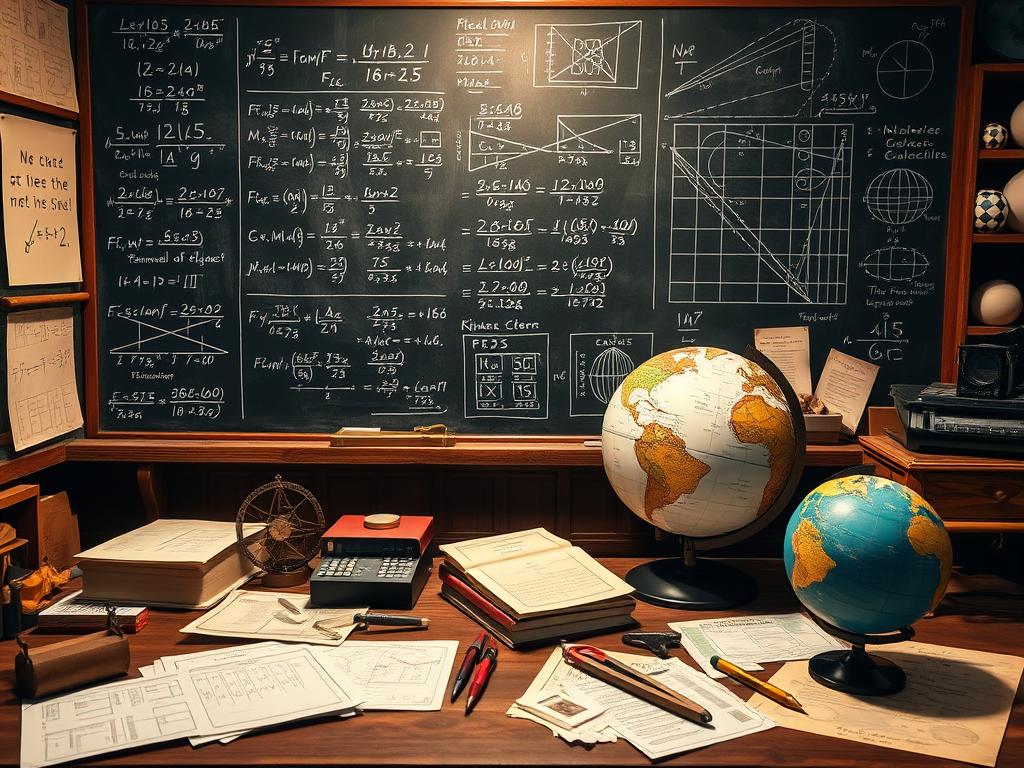
Calculating Trajectories for Apollo Missions
Johnson’s talents were key during the Apollo era. She made complex orbital mechanics calculations for missions to the moon. Her work helped Apollo 11 land humans on the moon for the first time in 1969.
Johnson wrote 26 research reports during her career. She got the Presidential Medal of Freedom in 2015 for her work. Her legacy inspires many in STEM fields, especially in aerospace engineering and orbital mechanics.
The Impact of Katherine Johnson’s Work
Katherine Johnson changed space technology forever. Her exact calculations made NASA missions safe and successful. This included Alan Shepard’s first American spaceflight and John Glenn’s orbit around Earth.
Advancements in Space Navigation
Johnson’s work on space paths led to big wins in space travel. Her math was key for:
- Launching the first American into space in 1961
- Landing the first men on the moon
- Creating better and faster ways to travel in space
Influence on Future Generations
Johnson worked at NASA for 30 years, inspiring many in STEM. Her fight against racism and sexism is a lesson for all.
As a mentor, Johnson’s legacy keeps NASA focused on diversity. Her story has encouraged women and minorities to join aerospace engineering.
Not long ago, few knew Johnson’s name. But now, her work and role at NASA are celebrated. Her story inspires new generations, making her a brilliant mathematician who shaped space exploration.
Recognition and Awards
Katherine Johnson’s work at NASA won her many honors and awards. Her work in space and STEM education made a big impact.
Presidential Medal of Freedom
In 2015, President Barack Obama gave Johnson the Presidential Medal of Freedom. It’s the highest honor for a civilian in the U.S. It celebrated her work in space and her breaking of racial and gender barriers in science.
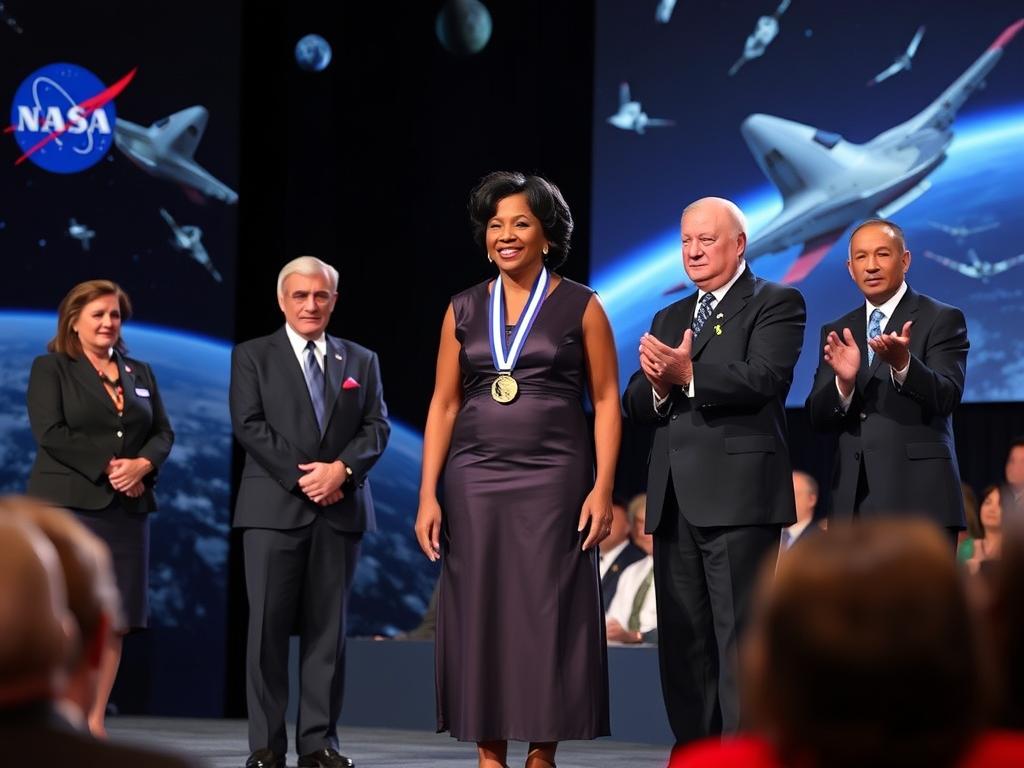
NASA Honors
NASA gave Johnson many awards for her work:
- NASA Lunar Orbiter Spacecraft and Operations team award (1967)
- NASA Silver Snoopy Award (2016)
- NASA Group Achievement Award (2016)
These awards show Johnson’s important role in space missions like Apollo and Space Shuttle.
Legacy in STEM Education
Johnson’s story has inspired many to study science and math. Her legacy lives on through:
- The naming of a NASA facility after her in 2017
- STEM programs and scholarships in her honor
- Her role in the book and film Hidden Figures, which made her work famous
Johnson’s work keeps pushing for more diversity and inclusion in science.
The Intersection of Race and Gender
Katherine Johnson’s journey shows the tough challenges faced by African American women in the mid-20th century. Her work at NASA was set against a backdrop of civil rights fights and workplace bias.
Challenges Faced as a Black Woman
Johnson lived in a time when women were not treated equally. In the 1960s, women made up half of the college-educated workforce. But only 28% worked in science and engineering. For Black women like Johnson, the challenges were even greater.
Segregation was a big part of life at Langley Research Center. Johnson and her colleagues worked in different places, showing the racial divides of the time. Yet, she kept going, her talent shining through.
Breaking Stereotypes in a Male-Dominated Field
Johnson broke through in a field full of white men. She spoke up in meetings, asked tough questions, and did outstanding work. Her achievements challenged old ideas about African Americans and women in science.
- Johnson graduated high school at 14
- She earned degrees in math and French
- NASA employed her for 33 years
Johnson’s impact goes beyond her math skills. She opened doors for more diversity in NASA and science. Her story, told in “Hidden Figures,” still inspires women and minorities in STEM today.
Katherine Johnson’s Lasting Legacy
Katherine Johnson’s work at NASA has made a big impact. Her story inspires women and minorities in STEM fields. She shows us the power of hard work and excellence.
Inspiration to Women and Minorities
Johnson’s achievements have inspired many to follow in her footsteps. She is a role model for diversity in science. In 2015, President Barack Obama gave her the Presidential Medal of Freedom.
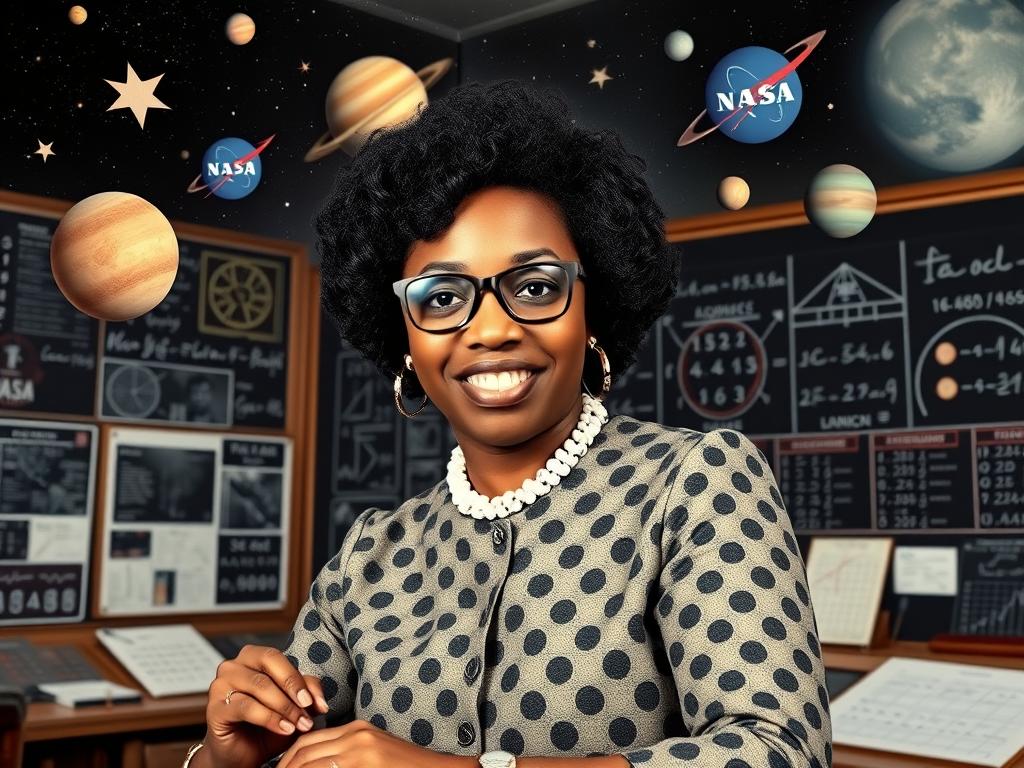
Representation in Popular Culture
The 2016 book and film “Hidden Figures” made Johnson’s story known to more people. This has helped show the importance of diversity in science. Katherine Johnson’s legacy inspires new efforts to make STEM education and careers more inclusive.
Johnson received many honors in her later years. NASA named a building after her in 2017. In 2019, she got the Congressional Gold Medal. These awards show her lasting impact on American science and culture.
The stories of Katherine Johnson and others like her have sparked a new interest in science. This change is helping us see history in a new light. It’s inspiring a new generation of scientists from all walks of life.
The Significance of Accurate Calculations
Katherine Johnson’s work in math was key to space safety early on at NASA. Her efforts helped start a new era in space travel. Johnson passed away at 101, but her impact is still felt.
Importance in Space Missions
In the 1960s, computers were not trusted. Johnson’s manual math was crucial. It kept astronauts safe and helped missions succeed.
- She worked on Alan Shepard’s Freedom 7 mission in 1961.
- John Glenn asked Johnson to check his 1962 Friendship 7 flight’s computer results.
- Her math was key for Apollo 11’s moon landing in 1969.
Historical Context of Her Work
Johnson worked during a critical time in American history. The Space Race was intense, and her work gave the U.S. an advantage. Her accurate math helped:
- Guide the first American into space
- Ensure the first American orbit around Earth
- Lead Apollo 11 to the moon
Johnson’s 33 years at NASA showed the power of math in space. Her work inspires many in STEM fields today.
Personal Life and Values
Katherine Johnson lived a life full of balance. Born in 1918, she worked at NASA while being a wife and mother. Her family always came first, even when her job was demanding.
Family and Community Involvement
Johnson did more than just work and care for her family. She also helped her community. She mentored students and spoke at schools, encouraging them to follow STEM paths.
Advocacy for Education and Opportunity
Johnson loved education because of her own success. She graduated from West Virginia State at 18, summa cum laude. This made her want to help others get equal chances in school, especially in STEM fields.
Her motto was “You are no better than anyone else, and no one is better than you.” It showed her belief in fairness. She worked hard to open doors for those who were left out of science and math.
- Received the Presidential Medal of Freedom in 2015
- Awarded three NASA Special Achievement Awards
- Named Mathematician of the Year in 1997
Johnson’s legacy still inspires us today. Her story, told in Hidden Figures, shows the power of never giving up. It teaches us about the value of education and helping others.
The Role of the Hidden Figures in History
Katherine Johnson’s story shows how women and African American scientists helped NASA. Her work, along with others, shows teamwork is key in space exploration.
Collaborators at NASA
Johnson was part of a group of African American women at NASA. They were called “human computers.” Dorothy Vaughan was the first black supervisor, and Mary Jackson got an Apollo Group Achievement Award.
The Importance of Diverse Perspectives
The hidden figures at NASA brought new ideas to the space program. Their work shows how important it is to include everyone in science. The movie “Hidden Figures” says, “We either get there together or not at all.”
Even today, women and minorities face challenges in STEM fields. They deal with bias, stereotypes, and lack of mentors. Groups like Black Girls Code and the National Society of Black Engineers are fighting for change, inspired by Johnson and her team.
- Katherine Johnson received the Presidential Medal of Freedom in 2015
- The film “Hidden Figures” showcases the careers of black female mathematicians at NASA
- Women dominated computer programming until 1984, according to a 2014 National Science Foundation report
The story of these hidden figures inspires us all. It shows that diverse teams can do amazing things in science and space.
Katherine Johnson’s Influence on Modern Science
Katherine Johnson’s work has changed data science and space tech forever. Her legacy inspires STEM education in the U.S. Johnson’s work has opened doors for many in math and space.
Continuing Her Work in Data Analysis
The Katherine G. Johnson Computational Research Facility was opened in 2017. It’s at NASA Langley Research Center. This center keeps her data analysis work alive.
It’s a place for new research in space tech. It uses the math Johnson worked on for 33 years at NASA.
Current Initiatives in STEM Inspired by Her Legacy
Johnson’s story has started many STEM programs. There’s even a Katherine Johnson Barbie doll from 2018. And Texas just passed House Bill 1605.
These steps aim to bring more diversity to science. They want to help more people succeed in data science and other fields.
Katherine Johnson’s legacy guides future scientists and mathematicians. Her story shows us the value of hard work and diverse views in science. Through STEM programs and new tech, her impact will last for many years.
Notes
Mathematician Biography, Katherine Johnson was an American mathematician who made groundbreaking contributions to the field of mathematics and space exploration. Born on August 26, 1918, in White Sulphur Springs, West Virginia, Johnson’s exceptional mathematical abilities were recognized from an early age, leading her to pursue a career as a mathematician at the National Advisory Committee for Aeronautics (NACA).
Space Pioneers, The story of Katherine Johnson and NASA’s success is one of determination, courage, and innovation. As a member of the “human computer” team at NACA, Johnson played a critical role in calculating trajectories for Project Mercury, the first American spacecraft to send a man into orbit. Her work was instrumental in the success of the Apollo 11 mission, which put the first humans on the moon.
Code Breakers and Trailblazers, Katherine Johnson’s achievements go beyond her mathematical prowess as a code breaker and trailblazer for women and minorities in STEM fields. She paved the way for future generations of women and people of color to pursue careers in science, technology, engineering, and mathematics (STEM).
Impact on NASA’s Success, Katherine Johnson’s contributions to NASA’s success cannot be overstated. Her calculations were instrumental in ensuring the safe passage of astronauts John Glenn, Neil Armstrong, and Buzz Aldrin into space. Her work also laid the foundation for the development of the Apollo 11 mission, which put the first humans on the moon.
The Movie That Changed Her Story, The release of the film “Hidden Figures” in 2016 brought Katherine Johnson’s story to a wider audience, highlighting her remarkable achievements and shedding light on the often-overlooked contributions of African American women to NASA’s success. The movie sparked widespread interest in Johnson’s life and legacy.
Legacy and Recognition, Today, Katherine Johnson is celebrated as a pioneering figure in American history. She received numerous awards and accolades for her work, including the Presidential Medal of Freedom, which she was awarded posthumously in 2015. Her legacy continues to inspire people around the world to pursue careers in mathematics, science, and technology.
FAQ
Q: Who was Katherine Johnson?
A: Katherine Johnson was a trailblazing African American mathematician. She worked at NASA during the Space Race. Born in 1918, she broke barriers to become key in early space missions.
Q: What were Katherine Johnson’s major contributions to NASA?
A: Johnson calculated flight paths for Mercury and Apollo missions. Her work helped Alan Shepard and John Glenn’s historic flights. She was key in the Apollo 11 moon landing.
Q: How did Katherine Johnson overcome racial and gender discrimination?
A: Johnson faced racism and sexism in the 1950s and 60s. She worked in segregated areas at Langley Research Center. Her talent and confidence earned her respect in a male world.
Q: What awards and recognition did Katherine Johnson receive?
A: Johnson got many awards, including the Presidential Medal of Freedom in 2015. She also got NASA’s Lunar Orbiter award in 1967. A NASA facility was named after her in 2017.
Q: How has Katherine Johnson’s legacy impacted STEM education?
A: Johnson’s legacy has sparked STEM education efforts. Scholarships and programs aim to boost diversity in science. Her story inspires women and minorities in STEM.
Q: What was Katherine Johnson’s role in the “Hidden Figures” story?
A: Johnson was a main figure in “Hidden Figures.” The book and film highlighted her and other African American women at NASA. Their work was crucial for U.S. space success.
Q: How did Katherine Johnson’s work impact modern space exploration?
A: Johnson’s work is still used in space missions today. Her legacy inspires new space technology. The Katherine G. Johnson Facility at NASA Langley continues her work.
Q: What was Katherine Johnson’s educational background?
A: Johnson showed math talent early and graduated high school at 14. She got degrees in math and French at 18. She integrated West Virginia University’s graduate school, showing her determination.
Q: How did Katherine Johnson contribute to the Apollo 11 mission?
A: Johnson’s calculations were key for Apollo 11’s moon landing in 1969. Her skills were crucial for NASA’s success, including this historic mission.
Q: What was the significance of Katherine Johnson’s manual calculations?
A: Johnson’s manual work was vital before electronic computers were trusted. Her quick and accurate calculations helped the U.S. lead in space exploration during the Space Race.
Source Links
- https://www.nasa.gov/from-hidden-to-modern-figures/ – From Hidden to Modern Figures – NASA
- https://www.biography.com/scientists/katherine-g-johnson – Katherine Johnson – NASA, Death & Hidden Figures
- https://www.britannica.com/biography/Katherine-Johnson-mathematician – Katherine Johnson | Biography, Education, Accomplishments, & Facts | Britannica
- https://www.nasa.gov/learning-resources/katherine-johnson-a-lifetime-of-stem/ – Katherine Johnson: A Lifetime of STEM – NASA
- https://www.nasa.gov/news-release/katherine-johnsons-continuing-legacy-at-ivv-beyond/ – Katherine Johnson’s Continuing Legacy at IV&V, Beyond – NASA
- https://johnsonms.fcps.edu/features/honoring-legacy-katherine-johnson-and-womens-history-month – 🚀 Honoring the Legacy of Katherine Johnson and Women’s History Month
- https://stemfrenzy.org/black-stem-excellence-katherine-johnson-the-mathematician-who-reached-for-the-stars-on-and-off-the-piano-keys/ – The Mathematician Who Reached for the Stars, On and Off the Piano Keys – STEM FRENZY
- https://www.forbes.com/sites/jumokedada/2020/03/25/5-lessons-on-resilience-from-the-legacy-of-nasa-pioneer-katherine-johnson/ – 5 Lessons On Resilience From The Legacy Of NASA Pioneer Katherine Johnson
- https://www.csmonitor.com/Science/Science-Notebook/2020/0225/Katherine-Johnson-Remembering-a-brilliant-mathematician-role-model – Katherine Johnson: Remembering a brilliant mathematician, role model
- https://en.wikipedia.org/wiki/Katherine_Johnson – Katherine Johnson
- https://www.captechu.edu/blog/katherine-johnson-commemoration-of-mathematician-and-computer-scientist-responsible-first-us – Katherine Johnson: In Commemoration of Mathematician and computer scientist responsible for the NASA flight path of the first U.S. moon landing | Capitol Technology University
- https://drjalin.com/2020/03/05/scientist-human-computer-remembering-the-legacy-of-kathrine-johnson-a-looking-at-leadership-entry/ – Scientist, Human Computer & Trailblazer; Remembering the Legacy of Katherine Johnson – Dr. Jálin B. Johnson
- https://www.kcur.org/2020-02-24/katherine-johnson-nasa-mathematician-and-an-inspiration-for-hidden-figures-dies – Katherine Johnson, NASA Mathematician And An Inspiration For ‘Hidden Figures,’ Dies
- https://aithor.com/essay-examples/race-and-gender-in-hidden-figures-2016-essay – Race and Gender in ‘Hidden Figures’ (2016) Essay
- https://www.refinery29.com/en-us/2020/02/9458046/katherine-johnson-death-hidden-figures-nasa-mathematician – Katherine Johnson, NASA Mathematician From Hidden Figures, Dies At 101
- https://mountainmessenger.com/ghs-honors-legacy-of-katherine-johnson/ – GHS honors legacy of Katherine Johnson
- https://www.nasa.gov/learning-resources/for-kids-and-students/who-was-katherine-johnson-grades-k-4/ – Who Was Katherine Johnson? (Grades K-4) – NASA
- https://science.nasa.gov/people/katherine-johnson/ – Katherine Johnson (1918-2020) – NASA Science
- https://www.nationalgeographic.com/history/article/katherine-johnson-mathematician-sent-apollo-moon-wins-hubbard-medal – Katherine Johnson, who helped send Apollo to the moon, wins Hubbard Medal
- https://www.nasa.gov/people-of-nasa/katherine-johnson-biography/ – Katherine Johnson Biography – NASA
- https://wvstateu.edu/about/history-and-traditions/notable-alumni/katherine-johnson-3/ – Katherine Johnson
- https://msmagazine.com/2017/01/17/hidden-figures-black-womens-historic-hidden-labor/ – ‘Hidden Figures’ and Black Women’s Historic Hidden Labor
- https://www.brookings.edu/articles/hidden-figures-highlights-the-ongoing-legacy-of-women-and-minorities-in-stem/ – “Hidden Figures” highlights the ongoing legacy of women and minorities in STEM
- https://www.smithsonianmag.com/smart-news/smithsonian-curators-remember-katherine-johnson-nasa-mathematician-dies-101-180974262/ – Smithsonian Curators Remember Katherine Johnson, NASA Mathematician Highlighted in ‘Hidden Figures,’ Who Died at 101
- https://blog.acceleratelearning.com/the-impact-of-black-scientists-and-innovators – STEM Career Spotlight: The Impact of Black Scientists and Innovators
